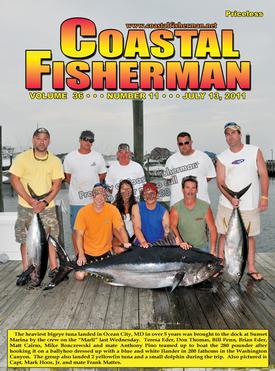


Article by Pat Schrawder
 INDUSTRY TRENDS IN COLOR PLOTTERS
INDUSTRY TRENDS IN COLOR PLOTTERS
There is no question that the multifunction LCD color video GPS plotter has become a staple in the field of marine electronics. However, over the past 4-5 years, there have been changes in this technology and its use.
The trend has been towards larger and more varied screen sizes for sure, but they have settled down into the 5”, 6”, 7”, 8’, 10”, 12” and 15” displays as measured diagonally. The larger the display, the more costly the unit will be. Size selection is a matter of what is offered by that particular manufacturer as well as where you can fit the unit on your boat and how much you want to spend. For the most part, the software and features of the unit will be the same. It is simply the screen size that will have changed. Most manufacturers add the availability of using more than one unit in a system. For example, on a larger boat, you could have one display on the bridge and one in the salon. In most cases you could even output the display signal to a large LCD flat screen TV if you had the room.
The shortage of good large screen LCD monitors for manufacturers to use in assembling their sets has been a problem this season. If you shop around, you may find that certain brands are eliminating their large screen options or simply stating that they are backordered indefinitely.
It’s hard to say what has caused this shortage and it is affecting the computer world as well. In fact, it may be that computer demand has played a role in the shortage. You can still find units out there, but they may not be of the best quality. You can be sure that the industry is working diligently to solve this problem and I am sure they will do so.
What has also occurred in this field is the trend away from truly combined units. From the onset, consumers were concerned about “putting all their eggs in one basket”. What if their GPS went out and had to be removed for repair? They would also lose their fishfinder and/or radar. In reality, however, consumers found that these new units were pretty stable and
trouble free. As boat owners began to have full confidence that it was okay to buy a combination unit, manufacturers were deciding to start splitting them up at least in part. While there are still some fully combined units out there, the trend has been towards using one (or more) displays and using so-called “black boxes” to pick up the additional functions. So you may purchase a GPS plotter, for example, with a color LCD display and then add a “black box” sounder module, a radar scanner or a myriad of other accessories such as weather fax, fuel consumption, etc. Once you have decided to go that route, the argument for a second display or a backup display becomes well worth considering.
The other trend we see has been towards incorporating the GPS antenna within the main unit. These models are advertised as having an internal antenna as opposed to an external antenna. The advantages of this are obvious. It makes the unit much easier and faster to install, which cuts down on the cost of installation. It also reduces the likelihood of repairs since, by and large, the most frequent problem with GPS units occur with the external GPS antenna. It also improves the esthetics of the boat’s lines as you have less “things” sticking up on the boat.
What’s next? Well, it’s hard to say. If they could just figure out how to make a wireless transducer… Wait! Somebody has actually done that and we’ll talk about it next week.
Pat and her husband, Larry are owners of L&L Marine Electronics on Golf Course Road in West Ocean City, MD.